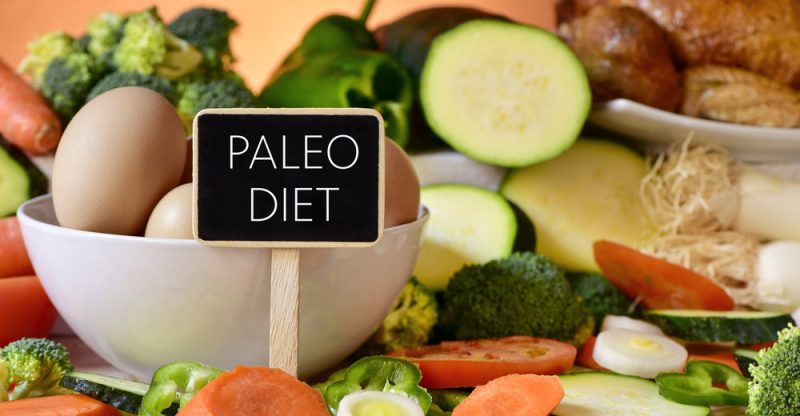Paleo Diet Beginner’s Guide
The Paleo diet is a nutritional plan that calls for eating paleo-friendly foods and avoiding those that are not. This entails limiting processed food to the bare minimum and consuming meat, vegetables, fruit, nuts, and seeds in their natural state.
Our diets have altered considerably over the last several decades. Processed meals are more prevalent than fruits and vegetables, and it’s hard to go more than a few miles without seeing a dozen new fast-food restaurants spring up. The Paleo diet is a way of eating that aims to replace contemporary convenience foods with meals that our forefathers ate.
The Paleo diet has been linked to various health advantages, including improved blood sugar levels and lower inflammation. Because it’s heavy in protein and fat and emphasizes nutrient-dense meals, it’s considered one of the finest diet plans for weight reduction. It may also promote satiety and help repair vitamin deficiencies. Despite this, the diet has sparked much debate in recent years.
Despite this, the Paleo diet is one of the most popular diets today, with a large following of followers who believe that it is a simple, easy-to-follow, and effective approach to improving one’s health.
So, what is the Paleo diet, and how effective is it? Here’s your Paleo diet beginner’s guide, which covers everything from what the Paleo diet is to how it came to be, its many health advantages, which Paleo foods to consume and which to avoid, Paleo recipes and meal planning, and how it compares to the trendy keto diet.
What Exactly Is the Paleo Diet?
The Paleo diet’s premise is simple: eat only foods that our hunter-gatherer forefathers had thousands of years ago during the Paleolithic Age. Processed meals, refined grains, and cereals are off the table, and your plate should be piled high with fruits and vegetables, meats, nuts, and seeds instead.
The premise is that these are the foods that our bodies were created to consume, but many of the excessively processed contemporary foods that now dominate our diets lead to chronic illness and health issues. Proponents of the diet claim that a well-planned Paleo diet may improve several areas of health, including weight loss and inflammation reduction.
It tends to be lower in carbs and higher in protein and fat than other diets since it is basically a grain-free diet. However, it excludes key food categories that are high in essential nutrients, such as legumes and dairy, making this diet a hot topic among specialists.
History
The Paleo diet may be traced back to physician Walter Voegtlin’s 1975 book “The Stone Age Diet,” which proposed the notion of eating like our forefathers. A decade later, in the New England Journal of Medicine, academics Melvin Konner and Stanley Boyd Eaton published an article on the Paleo diet that is regarded as one of the cornerstones of the Paleo diet as we know it today.
Dr. Loren Cordain, a biologist, is widely recognized for establishing the current Paleo movement when he published “The Paleo Diet” in 2002, followed by a slew of additional Paleo-related publications in the following years.
However, it wasn’t until the past five or six years that the Paleo diet gained traction. By 2013, it has risen to the top of Google’s list of most-searched weight-loss methods. The Paleo diet is still one of the most popular diets today, with a large following of committed adherents who appreciate the flexibility and health advantages it offers.
Please continue reading to discover more about the Paleo diet’s benefits and drawbacks and how to follow it to get the most out of it.
Various Versions
Paleo is divided into various sub-categories, each with its own set of laws, restrictions, and Paleo diet requirements. Here are a handful of the most frequent Paleo alternatives to think about:
Standard Paleo Diet: This version adheres to all of the Paleo diet’s requirements. Grains, legumes, and processed foods are avoided in favor of whole foods such as fruits, vegetables, meats, nuts, and seeds.
The Autoimmune Paleo Diet, often known as the AIP diet, eliminates foods that cause inflammation and then gradually reintroduces them to see which you can handle. This diet is beneficial for those who suffer from autoimmune diseases like rheumatoid arthritis or lupus.
If you can’t picture giving up grains completely, the 80/20 Paleo Diet could suit you. The 80/20 diet entails sticking to a rigorous Paleo diet for 80% of the time and eating your favorite non-Paleo foods for the other 20%.
The “Pegan diet” concentrates on plant-based whole meals while avoiding animal products entirely, combining the concepts of the vegan and Paleo diets. This diet is divisive, with some claiming that including animal products is essential for obtaining the benefits of the Paleo diet.
Like the Paleo diet, the Primal diet is based on eating a diet similar to that of our forefathers. On the other hand, the Primal diet includes raw, full-fat dairy, as well as the ingestion of some kinds of legumes and fermented soy products.
Health Advantages
1. Assists in weight loss
Is the Paleo diet effective in terms of weight loss? Although individual outcomes may vary, many individuals find that following the Paleo diet leads to significant weight reduction. In addition, you may minimize calories and jump-start weight reduction by replacing processed meals and refined carbohydrates with nutrient-dense proteins and healthy fats.
The Paleo diet plan’s specialized meals may also help you lose weight faster. Fruits and vegetables, which are rich in slow-digesting fiber and healthy fats and protein, which boost satiety and lower hunger, are promoted in the diet.
Keep in mind that the amount of weight you lose on the Paleo diet depends on various variables, including your previous diet. So while some individuals may lose inches and pounds after following the Paleo diet, others may not see the same dramatic benefits.
2. Protein-dense
It is essential to get adequate protein in your diet to maintain good health. Protein is required for tissue cell repair and regeneration, blood sugar regulation, oxygen transfer, wound healing, and muscle mass growth.
Low energy, lowered immunity, poor focus, and sluggish wound healing are just a few of the severe side effects of a protein deficit.
Protein is an important part of the Paleo diet. The strategy urges you to load up on protein-rich meals like grass-fed beef, chicken, and seafood.
3. Assists in the reduction of inflammation
Inflammation is a natural biological reaction that the immune system uses to defend against outside invaders. On the other hand, prolonged or chronic inflammation lies at the foundation of almost all illnesses, including cancer, heart disease, and diabetes.
Anti-inflammatory foods, such as fruits, vegetables, nuts, and seeds, are encouraged in the Paleo diet. This is because antioxidants are abundant in fruits and vegetables, and they aid in neutralizing damaging free radicals that cause inflammation in the body. On the other hand, nuts and seeds are abundant in anti-inflammatory omega-3 fatty acids.
Reduced inflammation may also help with the symptoms of inflammatory or autoimmune diseases such as rheumatoid arthritis, lupus, and ulcerative colitis.
4. Enhances satiety
The Paleo diet focuses on getting lots of heart-healthy fats and proteins into your diet, which may aid with satiety and hunger control.
Fat takes a long time to digest, so it remains in your stomach longer and keeps you feeling full. Meanwhile, a high-protein diet may suppress appetite by lowering ghrelin levels, the hunger hormone. Protein has also been demonstrated to jump-start your metabolism and helps you consume fewer calories.
Furthermore, the Paleo diet plan restricts items like refined grains and processed meals, which are easily absorbed and cause blood sugar spikes and crashes and increased appetite.
5. Eliminates nutrient deficiency
The Paleo diet stresses nutrient-dense foods over excessively processed or refined meals, which is one of its main advantages. These foods may provide critical micronutrients that your diet may lack, helping to alleviate various symptoms ranging from brain fog to chronic tiredness.
Increasing your consumption of red meat, for example, may help you get more iron while increasing your omega-3 fatty acid intake by eating more nuts and seeds.
If you have any nutritional deficiencies and are presently eating a diet high in “empty calories” from nutrient-deficient foods like junk food, transitioning to a Paleo diet may help you get more nutrients.
6. Controls Blood Sugar
The Paleo diet restricts various forms of carbs, such as cereal grains, although not as rigorous as a very low- or no-carb diet. This may have a beneficial effect on your blood sugar levels. The diet also emphasizes slow-digesting elements like fat and protein, which help to maintain blood sugar levels.
In a research published in the European Journal of Clinical Nutrition, 24 diabetic patients have compared the advantages of following a Paleo diet with a diet suggested by the American Diabetes Association. Researchers discovered that the Paleo diet improved blood sugar levels and insulin sensitivity to the traditional diabetic diet after two weeks.
Naturally, lifestyle factors have a part in diabetes prevention as well. In addition to dietary changes, frequent exercise, stress reduction, and lots of water may all help you maintain a healthy blood sugar level.
7. It is beneficial to the heart
According to a promising study, the Paleo diet may be helpful to heart health. It’s been found to help maintain your heart healthy and robust by lowering key heart disease risk factors.
According to Swedish research, following a Paleo diet for only five weeks resulted in substantial reductions in blood pressure, triglycerides, and cholesterol levels in postmenopausal women. In addition, another research found that the Paleo diet helped raise levels of healthy HDL cholesterol, which helps prevent atherosclerosis by moving through the circulation and eliminating fatty plaque.
Guide to the Paleo Diet
Are you looking for a beginner’s guide to the Paleo diet? Then, you’ve come to the right place. More on the Paleo diet principles, some short advice for increasing your success on the Paleo diet, which Paleo diet items you should include or avoid on the plan, and some delectable recipes to get you started are all included in this Paleo diet plan beginner’s guide.
- A 30-day Paleo meal plan will help you figure out whether the Paleo diet is good for you and if it can help you reach your objectives, whether they be weight reduction, more energy, or just better health.
- If the Paleo diet as a whole is too restricted or difficult to follow, consider a reduced version. There are several alternatives to choose from, making it simple to pick something that suits your needs.
- Print a list of healthful Paleo foods for simple reference and carry it with you to the grocery shop. To ensure the highest quality, look for organic fruits and vegetables and unprocessed meals with few additional additives.
- As a general guideline, if feasible, choose whole foods that have been lightly processed. Foods with extensive ingredient lists are generally loaded with preservatives, chemicals, and artificial sweeteners that you should avoid.
- Keeping unhealthy cravings and snack items out of your kitchen is one of the most effective strategies to prevent them. Ensure you have plenty of nutritious snacks on hand and toss out the junk stuff.
- Although there are many Paleo meal plan delivery services available, doing your own grocery shopping and meal preparation at home gives you greater control over your meals. In addition, it allows you to get the full advantages of the Paleo diet.
- It’s possible to eat fried bacon and butter while still following a Paleo eating plan. However, to get the most out of the Paleo diet, consume plenty of fruits and vegetables, unprocessed meat, poultry, seafood, heart-healthy fats, and a couple of servings of fish each week.
- Don’t worry about calculating calories or macronutrients; eat when you’re hungry. The aim is to do what comes naturally to you and to pay attention to your body.
- If you’re having trouble losing weight, cut down on high-carb, high-fat foods like nuts, seeds, and oils. While these meals are good when consumed in moderation, they are heavy in calories and may lead to weight gain.
- Every diet should be combined with a healthy lifestyle to get the best effects. With the Paleo diet plan, you’ll be much more likely to reach your health objectives if you exercise consistently, minimize your stress levels, remain hydrated, and avoid bad behaviors.
Menu
So, what foods are allowed on the Paleo diet? You’re in luck if you’re interested in what a typical Paleo diet breakfast, lunch, and supper may look like. For some ideas on how to plan your weekly Paleo diet meals, have a look at this example Paleo diet meal plan:
Day One
- Oatmeal without grains for breakfast
- Stir-fry with grass-fed beef and assorted vegetables for lunch
- Dinner: Chicken, avocado, tomatoes, spinach, and almonds in a salad
Day Two
- Veggie omelet for breakfast
- Lunch: Cauliflower rice, tomatoes, avocado, lettuce, and cilantro in a fish taco bowl
- Dinner: grilled lamb chops with sweet potato wedges from the Mediterranean
Recipes
Even if you adopt Paleo, you can still eat most–if not all–of your favorite meals in a healthy, whole-foods way. To make your diet more healthful and Paleo-friendly, try substituting lettuce burgers for ordinary burgers, cauliflower crust for pizza crust, and wheat flour for coconut flour.
Food List
Following the Paleo diet plan might be difficult since it is difficult to know which meals to include in your diet and which items to avoid. Here’s a list of Paleo diet items that you should incorporate into your diet:
- Grass-fed beef, lamb, goat, and other meats.
- Wild-caught salmon, trout, mackerel, haddock, and other seafood
- Poultry includes free-range chicken, turkey, duck, and other poultry.
- Apples, oranges, grapes, melons, pears, and other fresh fruits
- Broccoli, cauliflower, spinach, tomatoes, carrots, kale, asparagus, cucumbers, and other fresh veggies
- Eggs
- Examples are almonds, cashews, walnuts, Brazil nuts, hazelnuts, and other nuts.
- Flax seeds, chia seeds, sesame seeds, pumpkin seeds, and other seeds
- Olive, coconut, flaxseed, walnut, and avocado oil are all heart-healthy unprocessed oils.
- Turmeric, cumin, garlic powder, basil, oregano, rosemary, and other herbs and spices
Foods to stay away from
Understanding which Paleo diet food categories you can eat are crucial to know which ones you should avoid. Following a Paleo diet plan, you should avoid the following foods:
- Legume (including beans and peanuts)
- Dairy
- Refined Sugar
- Vegetable oils that have been refined
- Food that has been processed or that has been labeled as “junk.”
- Potatoes blanches
- Grains of cereal
- Caffeinated or sugar-sweetened drinks
When Eating Out, How to Stay Paleo
It’s one thing to make the ideal Paleo diet shopping list, but what about when you’re out to eat? It might be more difficult to stick to a Paleo diet menu during social gatherings and restaurants, but it doesn’t have to be. Follow these basic Paleo diet principles the next time you’re out to take the worry out of ordering:
1. Start with a meat-based main course like chicken, steak, or fish.
2. Try substituting lettuce wraps for buns, rice for cauliflower rice, and French fries for sweet potato fries.
3. Order a vegetable as a side dish; most restaurants will swap steamed broccoli, side salads, or other vegetables at no additional fee.
4. Request that your meal be prepared with coconut or olive oil rather than canola or vegetable oil.
5. Instead of sweet treats, go for a dish of mixed fruit. This not only improves your weight-loss outcomes as part of a Paleo diet, but it also reduces your sugar consumption.
Keto vs. Paleo Diet
Is there a diet that has surpassed Paleo in popularity? For example, the keto diet receives over 1.2 million monthly Google queries. So, which is better: Paleo or Keto? Paleo and keto, both low-carb, low-sugar diets that are nutrient-dense, remove the bulk of “empty calories” in the usual Western diet. Furthermore, both may contribute to weight reduction, improved blood sugar control, and other benefits.
The fundamental difference between the Paleo and keto diets is that the keto diet is higher in fat, while the Paleo diet is richer in protein. While the Paleo diet still contains a range of healthful fats, the keto diet is very heavy in fat, with keto fats accounting for up to 75% of daily calories.
While the Paleo diet removes added sugar, grains, beans/legumes, and dairy, the keto diet eliminates almost all sources of sugar, including fruit and sweet potatoes, which are the Paleo’s go-to starch. As a result, the keto diet only permits roughly 20 to 30 grams of “net carbohydrates” (total carb grams minus fiber grams) per day to achieve nutritional ketosis.
The purpose of the Paleo diet, on the other hand, is not to achieve ketosis but rather to consume a healthy, balanced diet. So, unless they’re also “counting macros,” most Paleo dieters aren’t trying to consume a precise quantity of carbohydrates (the number of carbs, fat, and protein in the diet).
Is it secure?
While the Paleo diet has some health advantages, it also has certain drawbacks that should be considered.
To begin with, it’s questionable if it can really live up to its promise that adopting our ancestors’ diet can enhance general health. While we may all benefit from eating less processed foods and more fruits and vegetables, many people question if our forefathers were really healthier than we are now, considering their much shorter lifespans. Indeed, one research found that they may have had higher rates of atherosclerosis or hardening of the arteries.
Many foods that are high in beneficial nutrients are also prohibited on the Paleo diet. For example, legumes are abundant in fiber, protein, and minerals such as iron, magnesium, potassium, and folate. Dairy may also benefit your diet since it contains calcium, phosphate, and vitamin D.
Furthermore, the Paleo diet places a strong focus on meat. As a result, the Paleo diet may not be ideal for everyone, and vegetarians and vegans are unlikely to discover a modified Paleo diet. Finally, because the Paleo diet generally excludes specific food categories, it is not recommended for vegans, vegetarians, or people with other severe dietary restrictions, as meeting nutritional requirements may be difficult.
While eating meat in moderation is OK, eating too much of it may not be. Consuming a lot of red meat, for example, has been related to a higher risk of death and colon cancer.
There are, however, certain Paleo diet foods that are not good for your health but are permitted on the plan. Pork, for example, is more prone to parasites, while shrimp often includes harmful chemicals and additives. These foods are not restricted to the Paleo diet; however, they should be consumed in moderation on a health-promoting diet.
Similarly, although fried bacon and regular butter are Paleo-friendly, they should be consumed in moderation. To get the most out of the Paleo diet, load your plate with plenty of veggies and fruits and modest portions of nuts, seeds, lean protein, and heart-healthy fats.
If you have diabetes, however, you should seek medical advice before making any big dietary adjustments. For example, to minimize blood sugar swings, lowering your carb consumption on the Paleo diet may need adjusting your diabetic medication dose.
Finally, pay attention to your body’s signals. If you have any persistent bad symptoms after starting a Paleo diet, see your doctor or a nutritionist ensure you don’t have any nutritional gaps in your diet that need to be addressed.
Last Thoughts
- What is the Paleo diet, and how does it work? This trendy diet focuses on consuming foods that our forefathers had access to during the Paleolithic period.
- The Paleo diet excludes legumes, dairy, cereal grains, and processed foods as the primary dietary categories. Instead, meat, poultry, seafood, fruits and vegetables, nuts, seeds, and heart-healthy fats are emphasized.
- Enhanced weight reduction, decreased inflammation, increased satiety, and stable blood sugar levels are all potential health advantages of the eating plan. It also encourages the consumption of nutrient-dense and high-protein meals, which may help with overall health.
- There are some disadvantages to the diet as well. The Paleo diet is not only tough to follow if you have any dietary constraints, but it also excludes numerous nutrient-dense food categories while permitting some harmful items.
- There are many healthful Paleo diet recipes available, including Paleo snacks, lunches, and desserts, making sticking to the diet plan simpler than ever.
Frequently Asked Question
What is the paleo diet meal plan?
A: The Paleolithic diet, also known as the paleo or caveman diet, is based on a group of hunter-gatherers who followed their instincts to eat what they hunted and gathered. It’s high in protein, low in carbs and fat, emphasizing eating real foods like veggies, fruits, those wild grasses that were so easy to find back then (before agriculture).
FDA Compliance
The information on this website has not been evaluated by the Food & Drug Administration or any other medical body. We do not aim to diagnose, treat, cure or prevent any illness or disease. Information is shared for educational purposes only. You must consult your doctor before acting on any content on this website, especially if you are pregnant, nursing, taking medication, or have a medical condition.
HOW WOULD YOU RATE THIS ARTICLE?





